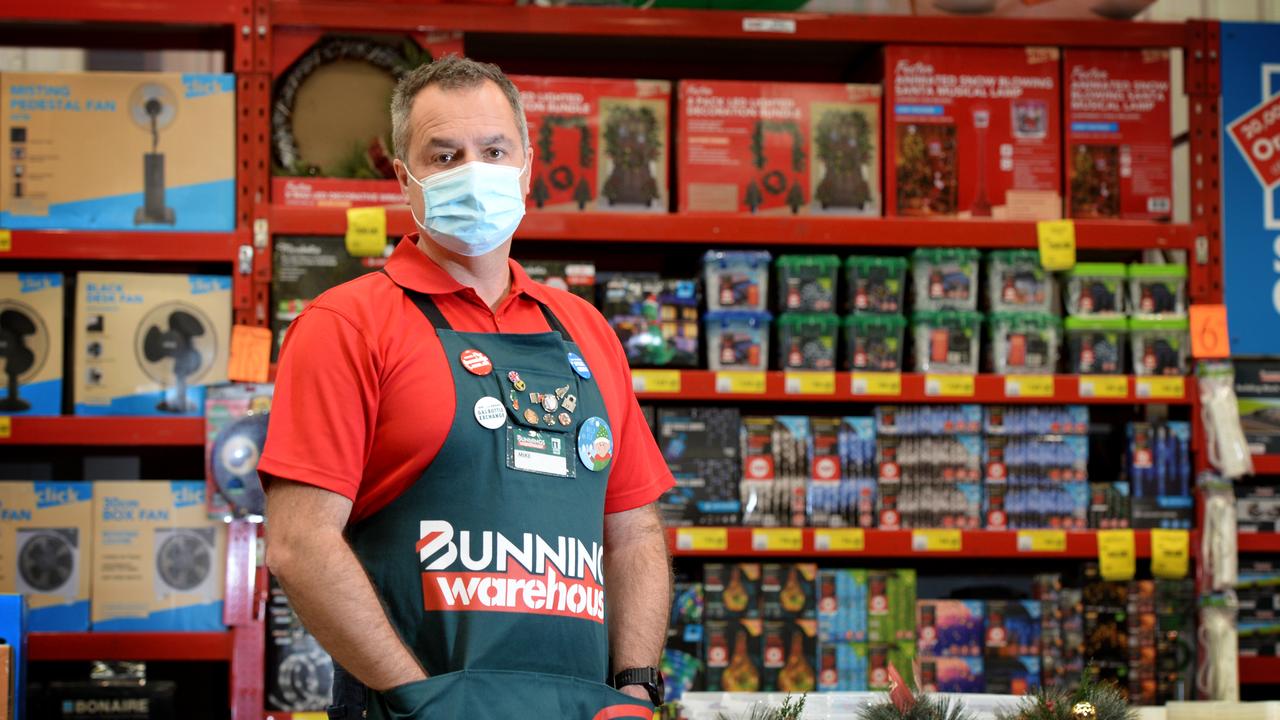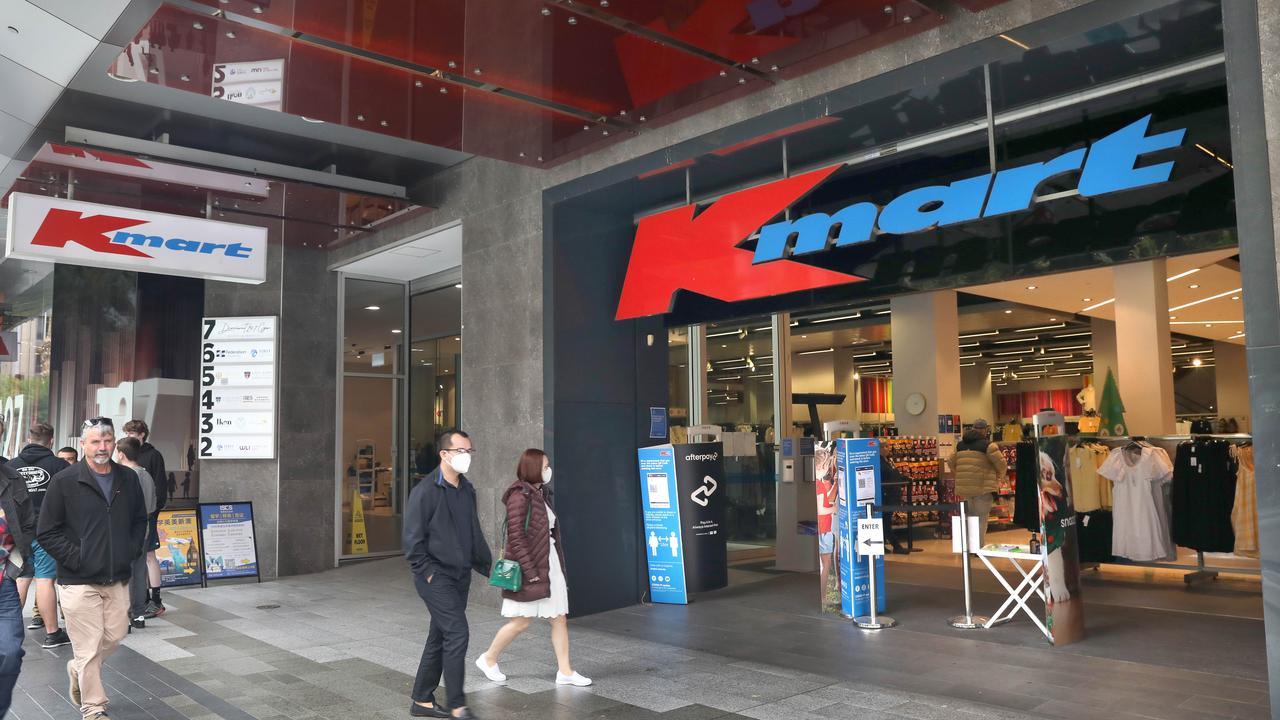Omicron surge: Wesfarmers’ navigates the new Covid reality
Australian retailers have to navigate Omicron disruptions and that means labour shortages, fewer shoppers and supply squeezes.

Business
Don't miss out on the headlines from Business. Followed categories will be added to My News.
Australian retailers face another two weeks of navigating the new Covid reality and that means staff shortages, fewer shoppers and supply squeezes.
An earnings update from Wesfarmers boss Rob Scott shows that even the biggest businesses in the land are being hobbled by rostering problems, with not enough staff available to process and get goods into the stores.
It’s going to be a feature for at least the next few weeks until the Omicron Covid-19 wave peaks and starts subsiding. Business is still hopeful it’s a temporary disruption and is banking on pent-up spending to spark a rebound on the other side.

The bulk of the current Omicron impact is going to emerge for most companies in the post-December trading period, when rising Covid case numbers and worker isolation started accelerating across the east coast. This is the most vulnerable period for retailers and its likely to see more warnings about hits to profit.
Wesfarmers, which owns retailers from Bunnings and Kmart to Officeworks, has warned that staff absence linked to the Covid-19 Omicron variant has put additional pressure on distribution centres and stores in some states.
This resulted in reduced trading hours across some stores as the retailer’s supply chain felt the pressure, particularly around stock and productivity.
“These issues are expected to persist while Covid-19 cases and the number of team members requiring to isolate remain elevated,” Wesfarmers said on Monday.
This is a very similar experience to other large retailers, including supermarket major Woolworths, which warned of material costs linked to supply chain disruptions and staff shortages before Christmas.
More recently Woolworths chief executive Brad Banducci said the supermarket operator’s distribution centres had been hit with absenteeism of between 20 and 40 per cent as a direct consequence of Omicron.
Rival Coles has also experienced its own shortages and has introduced in-store buying limits on some products.
All companies with on-site staff will be watching for signs of a Covid-19 peak – noting that in Britain this happened around a month after case numbers started escalating.
It was in the week of Christmas that Australia’s Omicron wave started accelerating, so all things being equal that gives another week for the pressures to persist before falling away. Combined with a watering down of Covid-isolation rules by national cabinet last week, this should tentatively get the nation’s supply chain moving again – as long as it can be managed responsibly.
Brokerage Macquarie points out all retailers, right across the board, are getting disrupted by staff shortages. Others to come out with supply-linked warnings in recent weeks include City Chic, Inghams and KFC-owner Collins Foods.
“The Omicron variant modelling suggests that a peak in infections is expected in the coming weeks,” the brokerage told clients in a note.
“An easing of isolation rules and a peaking of infections should take pressure off workers in the supply chain. However, we expect at least another two weeks of disruption across retailers.”

On the demand side, Macquarie said shoppers were avoiding high foot traffic areas, which was likely to lead to softer-than-expected January trading for many.
Companies with a complicated supply chain, such as Woolworths and Coles, had a higher chance of a negative sales update.
Listed online underwear retailer Step One said businesses had to get used to the new normal of disrupted supply chains, and lengthen the runway and accept they were going to have to hold on to more stock.
“We used to think about our Christmas range around July, and we’re ordering them now,” Step One chief executive Greg Taylor told this column.
“What it means is brands and companies need to think a lot longer ahead of where they are. And that in my view is the new normal.”
For Wesfarmers there was more light than shade in its latest earnings update, suggesting people are still spending when they feel comfortable.
The Perth-based conglomerate remains on track to hit analyst forecasts of a net profit after tax of between $1.18bn and $1.24bn for the December half. This sent Wesfarmers shares up 2.6 per cent on Monday, outperforming a 0.3 per cent lift in the broader market.
The Bunnings hardware franchise remains a powerhouse as it defied lockdowns and a subdued Christmas trading period. Bunnings is currently playing to its strengths in the face of Covid: a big box format and stores outside major shopping centres with a drive-in and drive-away model.
The problem area continues to be the Kmart and Target department store chains. The retailer is still undergoing a painful restructure, which includes more than 60 Target store closures over the past six months and conversion of some to Kmart stores. At the same time, many are inside shopping malls, which have seen Australians staying away in droves during summer’s Omicron wave.

Kmart’s earnings (which includes Target) are set to be more than halved on slower sales and costs.
Earnings before tax are expected to be between $215m and $223m for the December half. This compares to $487m for the same period last year.
Wesfarmers points out almost 25 per cent of Kmart’s trading days were impacted by government-mandated shutdowns across NSW and Victoria.
One bright spot for the retailer is Target’s transition to digital, with nearly a third of sales coming through its website. This compares to Kmart’s 14 per cent online sales penetration. Elsewhere Wesfarmers has work to do with its digital marketplace business Catch, which delivered sales growth of just 1 per cent during the December half. As stores were forced to close across the east coast this was a period when digital retail should have shone.
Catch remains capital-hungry and is expected to deliver a loss in the December half of as much as $45m. Wesfarmers says this reflects continued investment in team, technology and capabilities to support long-term growth.
The sting for Wesfarmers is that all the work and significant spending to reinforce its global supply chain, to overcome significant import hurdles such as shipping delays and container availability, was undone at home due to Covid-linked isolation and absenteeism. This impacted the final mile, meaning the goods did not always make it into the store on time.








